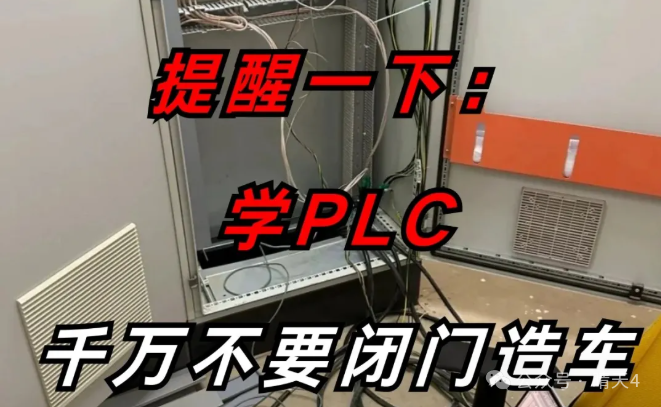
PLC System Optimization: Task Scheduling Algorithm Improves Real-Time Performance by 40%!
Introduction
Hello everyone! Today I want to share a technology that can significantly enhance the performance of PLC systems — task scheduling algorithm optimization. Don’t be intimidated by this technical term; I will explain it in the most accessible way possible. Through practical verification, reasonable task scheduling can improve the real-time performance of PLCs by over 40%! Want to know how this is achieved? Then let’s explore together!
What is a Task Scheduling Algorithm?
Let’s start with an example from everyday life. Imagine you are the manager of a fast-food restaurant; the PLC is like your restaurant, and the tasks are the customers’ orders. The traditional PLC task processing method is like a **“first-come, first-served”** queuing system: regardless of the size of the order, they are processed in order. A large order may cause the smaller orders behind it to wait a long time, leading to overall inefficiency.
In contrast, the optimized task scheduling algorithm is like an **“intelligent scheduling”** system: it dynamically adjusts the processing order based on factors such as the urgency of the order and preparation time. For example, a simple coffee order can be prioritized, while a complex meal can be processed later, greatly improving overall efficiency.
In a PLC, the task scheduling algorithm determines the execution order and time allocation of different control tasks, directly affecting the system’s real-time performance and response speed.
Why Optimize Task Scheduling?
You might ask, “My PLC has been using the default task scheduling method, and it works fine. Why change it?”
Let me illustrate with a few **“painful yet enjoyable”** examples:
-
Slow Emergency Response: When multiple tasks occur simultaneously, important safety interlocks may be delayed because they are queued behind other routine tasks. This is like having emergency patients and routine check-up patients waiting in line together; it is clearly unreasonable!
-
Unstable Execution of Periodic Tasks: If critical control tasks (like PID regulation) are interrupted by other time-consuming tasks, it may lead to a decline in control quality, just like a chef being constantly interrupted while preparing delicate dishes.
-
Waste of System Resources: Some non-critical tasks consume too much CPU time, while truly important tasks do not get enough resources, similar to a dishwasher taking up most of the kitchen space in a restaurant.
Common PLC Task Scheduling Algorithms
Here are several commonly used task scheduling methods in PLCs:
1. Priority Scheduling
This is the most commonly used method, akin to a hospital’s emergency triage system. You can set priorities for different tasks:
-
Highest Priority: Safety interlocks, emergency stop signals
-
Medium Priority: Critical control loops (such as temperature and pressure control)
-
Low Priority: Data logging, communication, and other non-real-time tasks
2. Time-Slice Round Robin
This method is like a restaurant’s “number calling system,” where each task takes turns executing for a fixed time. It is suitable for situations where tasks have similar importance, preventing any single task from monopolizing CPU resources.
3. Deadline Priority
This is particularly suitable for time-sensitive tasks, like food delivery orders that must arrive within 30 minutes. The system prioritizes tasks that are closest to their deadlines.
Real Application Case
Let’s look at a real optimization case:
A certain automotive welding production line uses Siemens S7-1500 PLC, and the original system adopted the default task scheduling method. As the production pace accelerated, the following issues arose:
-
Welding quality inspection sometimes experienced delays
-
Robot synchronization occasionally became unsynchronized
-
Emergency stop response time was unstable
Optimization Plan:
-
Set safety signals to the highest priority
-
Set welding control to medium priority
-
Set data logging and communication to low priority
-
Reserve fixed time slices for critical tasks
Optimization Results:
-
System real-time performance improved by 40%
-
Emergency stop response time reduced from 50ms to 30ms
-
Welding quality stability improved by 25%
Steps for Implementation
If you want to optimize your PLC task scheduling, you can follow these steps:
-
Task Analysis: List all tasks and assess their importance and real-time requirements
-
Priority Assignment: Establish a priority system based on the analysis results
-
Time Allocation: Reserve sufficient execution time for critical tasks
-
Testing and Validation: Conduct thorough testing during non-production periods
-
Continuous Monitoring: Monitor system performance after going live and adjust as necessary
Considerations
When optimizing task scheduling, you need to pay attention to:
-
Do Not Over-Optimize: Leave enough resources for low-priority tasks, just like a restaurant must also cater to regular customers
-
Avoid Priority Inversion: The situation where high-priority tasks wait for low-priority tasks to release resources
-
Consider Dependencies Between Tasks: Some tasks need to be executed in a specific order
-
Retain Debugging Interfaces: To facilitate troubleshooting later
Interactive Questions
-
Which tasks in your PLC system require priority scheduling the most?
-
What task scheduling methods does your PLC support?
-
What challenges have you encountered in task scheduling optimization?
Conclusion
Task scheduling algorithm optimization is an important means to enhance PLC system performance. A 40% improvement in real-time performance not only means faster response times but also higher production quality and safety. Although it requires some learning and practice, the return on investment is absolutely worthwhile!
I hope this article helps you better understand and apply PLC task scheduling optimization techniques. If you have any questions or experiences to share, feel free to leave a comment. Let’s work together to create more efficient and reliable automation control systems!
ShareSaveViewLike